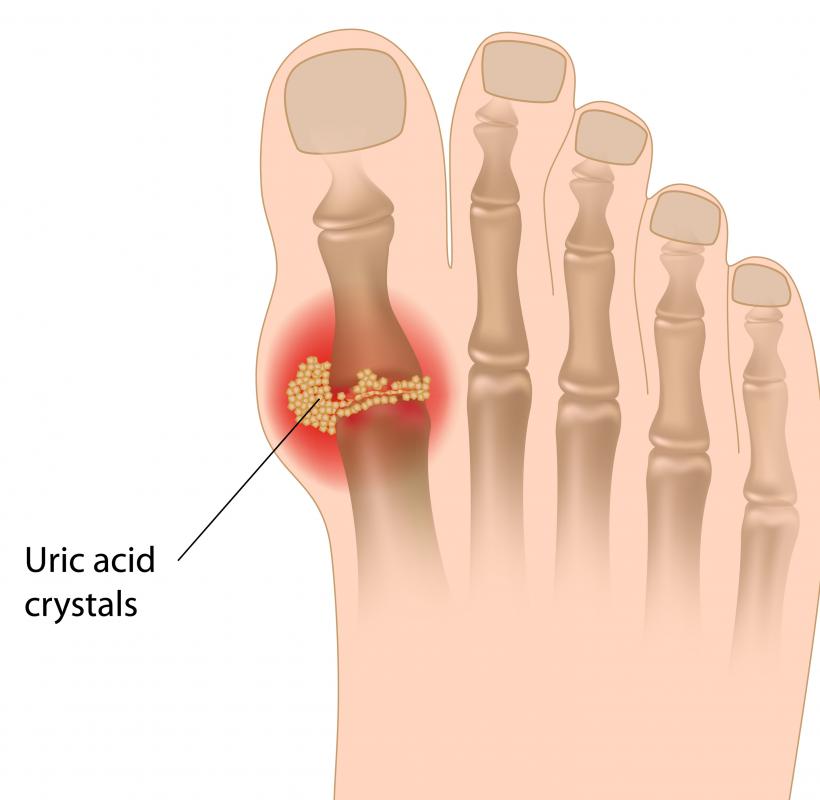At WiseGEEK, we're committed to delivering accurate, trustworthy information. Our expert-authored content is rigorously fact-checked and sourced from credible authorities. Discover how we uphold the highest standards in providing you with reliable knowledge.
What is Podagra?
Podagra is another name for gouty arthritis of the big toe. The disease is caused by a metabolic imbalance that causes an increase in the uric acid concentration of the blood. In a normal metabolic process, the excess uric acid is excreted through urine. With podagra, the uric acid in the blood eventually crystallizes and is deposited on the joints of the foot, settling for the most part around the big toe.
The toe joint with podagra may swell and turn red when suffering an attack of gout. The uric acid crystals irritate the surrounding tissue and cause inflammation in the joint. Diagnosis requires an x-ray to determine the presence of the crystals in and around the joint. A blood test also may be ordered to confirm the existence of elevated levels of uric acid.

Physicians recommend a diet low in alcohol and high fructose sugars to combat the metabolic processes that result in the increase of uric acid. Drinking lots of water daily can help flush out the urinary system and help prevent the formation of the uric acid crystals. A low body fat index also has been shown to reduce the frequency of gouty arthritis forming in the foot.

The pain of podagra can be relieved with over-the-counter non-steroidal anti-inflammatory (NSAIDs) medications such as ibuprofen. Aspirin is not recommended for people with this disease. Some physicians may prescribe narcotic pain relievers for severe cases of podagra. Corticosteroid shots into the affected joint also may be administered to relieve some of the pain and swelling associated with this condition.
If the podagra becomes chronic with more than two episodes a year, a physician may prescribe a medication called Zyloric®, which reduces the concentration of uric acid in the blood. The medication may be able to prevent the formation of new crystals and avoid the calcification of stones in the urinary tract. This medication is not recommended to be taken during an active attack of podagra because the excess uric acid is released in large quantities and may cause an increase in the painful symptoms.
The acute inflammatory arthritis caused by the deposits of the uric acid crystals can be relieved with the careful monitoring of diet and alcohol consumption. A small percentage of people with podagra will not experience the symptoms more than once. Although the disease can cause permanent damage to the joints of the big toe if left untreated, most of those with the condition are able to manage it with dietary adjustments.
AS FEATURED ON:
AS FEATURED ON:












Discuss this Article
Post your comments